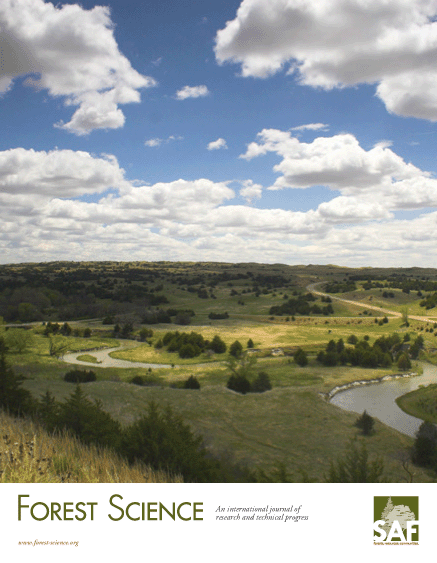-
Views
-
Cite
Cite
George L. Martin, Alan R. Ek, A Comparison of Competition Measures and Growth Models for Predicting Plantation Red Pine Diameter and Height Growth, Forest Science, Volume 30, Issue 3, September 1984, Pages 731–743, https://doi.org/10.1093/forestscience/30.3.731
Close - Share Icon Share
Abstract
Several mathematical models for survivor tree growth were fitted, via nonlinear regression, to data from 17 permanent sample plots located in red pine plantations in Wisconsin. Simple empirical models provided slightly better fits for diameter growth, and much better fits for height growth than did semi-empirical or constrained model forms. A considerable improvement in diameter growth model fit was obtained by including a measure of competitive stress (competition index), although it made little difference if intertree distances were incorporated in the index. The best fit was obtained by simply using sample plot basal area as the measure of competitive stress. This observation was attributed in part to the typically uniform spatial pattern of the red pine plantations. No significant improvement in the height growth models could be obtained from the inclusion of a competition index. Data from two additional plots, not included in the regression analysis, provided a basis for comparing the fitted models. This comparison, together with a study of the residuals from the regression analysis, led the authors to conclude that the empirical model with a distance-independent competition index is the most accurate for diameter growth projections in managed plantations within the range of data. However, the semi-empirical model with a distance-independent index is likely to be more accurate for unmanaged stands and for extrapolating beyond the range of data. Forest Sci. 30:731-743.





